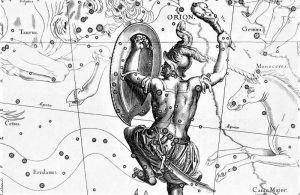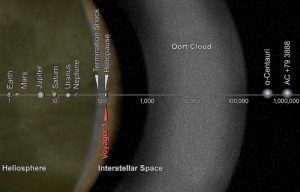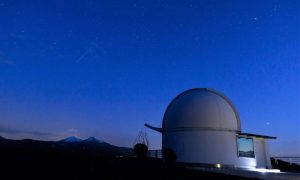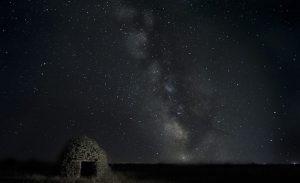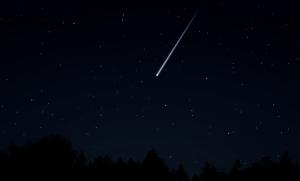Orion constellation
Astronomy as a science is applied in the findings of celestial bodies throughout space and for many years have been visualized, discovered and studied cosmic phenomena never before studied by humans at first sight, thanks to this science, we find a stellar body called the Orion constellation that is, perhaps, the largest and most recognized grouping of stars in the entire planet, because with its large and bright stars, visible from both hemispheres, north and south, make this constellation a spectacle around the world.
What is the Orion constellation?
Also known as Hunter, the Orion constellation is the largest grouping of stars in the Milky Way, with an immense variety of star styles and shapes that can be visualized around the entire planet, located in the celestial equator; the constellation is visible throughout the night during winter in the northern hemisphere and summer in the southern hemisphere, and is also visible a few hours before sunrise from late August to mid-April.
Characteristics of the Orion constellation
- The Orion constellation is covered by an interstellar region composed of a set of rising stars, hydrogen gas and plasma, this phenomenon is known as the Orion Molecular Cloud Complex (M-42).
- It is 500 light years from Earth.
- The constellation of Orion has clouds like clusters that are formed by more than one hundred stars giving rise to other figures that house new constellations, new galaxies and probably new universes.
- Positioned on the lower right, taking as a reference the belt of the constellation among other nebulae, Orion represents the horse’s head.
- The constellation of Orion served as a calendar and compass for many civilizations for their orientation at each time of the year, with this they were governed even for the seasons of plantings and harvests.
- Orion’s belt is a set of stars that radiate light in the central part of his figure positioning itself close to where his sword is. This belt is represented in other cultures such as the three Mary or the three kings.
- The stars of the belt have a declination of zero degrees.
History
This constellation was given in honor of the name of a hunter named Orion, who belonged to Greek Mythology.
In Greek literature, Orion existed as a great hunter in Homer’s Odyssey, an epic poem based on 24 songs composed in the 8th century BC., attributed to the events of the Greek hero Odysseus, after the Trojan War, the Orion’s birth is quoted in the month of May in the historic region of Beocia, in western Greece, where he was venerated as a hero and it is said that there is an etiological landscape in which Orion is responsible for Sicily’s straits, which is one of the twenty regions that make up the present Italian Republic.
Orion was the son of Poseidon, the king of the seas, and of the Goddess of the land Gaia, he was conceived the gift of walking on the sea by the power of his father; in his adventures, he traveled to the island of Chios where it is related that he asked for the hand in marriage of the daughter of Enopion, Merope. By refusing, the hunter was angry and in a state of drunkenness, he raped her, furious and thirsty for revenge, Enopion took the vision from the hunter with the help of the god Dionysius who left him in a deep state of sleep and upon awakening had lost sight. Desperate, Orion implores prayers between sobs for help from his God who told him that he should travel to the far east and seek the rising Sun which was the only thing that would heal him.
Upon recovering his vision, the hunter returned to Chios to take revenge for the actions of King Enopion, but the king was already hidden underground with his daughter Merope, full of anger, Orion began to kill all the animals that crossed his path. His mother, Goddess Gaia, warned him to stop the massacre, but Orion ignored it, without any other option, Gaia sent a scorpion, which the hunter stepped on in his moment of anger, and this scorpion nailed its poisonous sting to his foot, causing him to fall to the ground and cry to Zeus to ascend to the heavens, honoring him as the great hunter he was.
Location
The position of the constellation Orion is located on the galactic equator, which is close enough to the Milky Way to be seen with a telescope and even with low-power binoculars. In both hemispheres, it is visible from October to March, the observers located in the terrestrial equator can appreciate the constellation in its passage through the zenith, which is a point located in the celestial hemisphere above the vertical of the observer.
Stars of the Orion constellation
Within the constellation of Orion there are a variety of stars that make up the hero hunter, these are the most relevant:
Rigel or β Orionis
Made up of triple stars, is the most giant and brightest constellation, has a white and blue, is the most important star.
Betelgeuse or α Orionis
Of the firmament, it is the star number nine for its brightness and is the second brightest of all the constellation.
Bellatrix
It is the third most powerful star of the whole constellation for having a clear blue brightness, its name means The Fighter.
The stars that have more brightness and that are known worldwide are The three Marias or The three magicians kings:
Alnilam or Epsilon Orionis, Alnitak or Deseta Orionis and Mintaka or Delta Orionis, have a straight shape in the firmament is related to a geometric figure so they form an asterism. All these stars have a temperature higher than 275.000 and 537.000 C surpassing the Sun loaded with a great luminosity.
What Orion constellation represents
It has a special meaning, because it was considered one of the biggest doors to heaven by different ancient civilizations, which considered it the closest thing to the divinity in the firmament.
Legend
The Orion constellation is based on a Greek hero who ascended to heaven after leaving his life on earth when he fulfilled his destiny. His name was Orion, the hunter.
There are many alternate stories about the adventures of Orion, one of them is The Hunter and the Bull, in which in the stars a battle is fought between these cosmic beings for the 7 daughters of the Titan Atlas which are the Pleiades who ascended to the sky to escape Orion’s harassment by such action, the bull stands in his way to fight the hunter, however, Orion finds his shield and stick ready for battle, in order to get closer to his beloved Pleiades.
Presence in the Bible
In the Bible, there are writings that are considered sacred, written by Gemini, a monk who relates the expansion and creation of all the stars in the universe, and who considered the stars as lights that served to separate day from night in the heavens. It also provided signals for the seasons, in winter or summer.
What the monk expressed in his time is what we know today as the constellation of Orion.
Importance of the Orion constellation
Studying the stars has had a boom thanks to the constant evolution of technology, astronomy as a science is open to endless possibilities to acquire wisdom of the Universe and its immensity as well as to understand the functions and mechanics of our solar system.
How to cite this article?
Briceño V., Gabriela. (2019). Orion constellation. Recovered on 23 February, 2024, de Euston96: https://www.euston96.com/en/orion-constellation/
